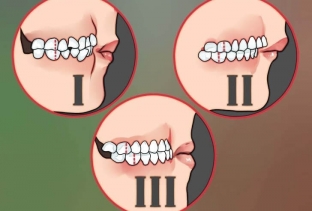There are several types of malocclusion. One of them is a deep bite. A deep bite is considered a vertical anomaly of occlusion of the teeth and is characterized by a defect with an increase in the overlap of the lower incisors by the upper incisors for more than a third of the height of their crowns. In this case, the cutting – tubercular contact.
When the jaws are closed, a deep bite is accompanied by a significant vertical overlap of the incisors of the upper row. Deep bite is the most common malocclusion. Learn about the causes, symptoms and treatment of deep bite.
Why is a deep bite formed? Causes of deep bite
In most cases, deep bite in children is inherited from parents along with the anatomical structure of the jaws and facial skeleton. Congenital facial deformities such as cleft lip and "wolf mouth" contribute to the development of malocclusion. During pregnancy, the risk of developing a deep bite of toxicosis, fetal hypoxia, intrauterine infections, multiple pregnancies and mechanical injuries increase. What bad habits provoke the development of a deep bite, read further on estet-portal.com. In the postpartum period, rickets, malnutrition, impaired bone development can contribute to the formation of a deep bite.
Prolonged sucking of pacifiers, fingers and other objects, as well as lip biting are predisposing factors in the formation of a deep bite.
Deep bite differs from other dental anomalies. Deep bite classification
In order to distinguish between deep incisal occlusion, deep incisal overlap and deep traumatic occlusion, it is necessary to identify the localization of the cutting – tubercular contact. A deep traumatic bite is detected when there is contact of the cutting edges of the lower incisors with the gum or palate. The forms of bite described above can be considered as successive stages of a single process.
There are 3 degrees of deep bite according to the overlap of the incisors:
- 1 degree – overlap height from 1/3 to 2/3, which corresponds to 3-5 mm;
- 2 degree – more than 2/3 of the height and up to the whole crown, which is 5-9 mm;
- 3 degrees – overlap more than crown height, corresponding to more than 9 mm.

Facial and oral signs of deep bite
Deep bite contributes to the development of serious functional disorders, and is also accompanied by a violation of the aesthetic appearance. Manifestations of a deep bite are facial and oral. The patient has a shortened lower third of the face, the lower lip is turned outward, the supramental fold is pronounced. Sometimes the patient's face resembles a bird's face.
With a deep bite, the oral mucosa is constantly injured and the periodontium is overloaded, which contributes to the development of stomatitis, periodontitis, gingivitis and periodontal disease, teeth are quickly erased.
Oral signs consist of overlapping of the lower anterior teeth by the upper teeth by the amount of the crown, the depth of the vestibule of the oral cavity is reduced, the upper jaw predominates over the lower jaw.
What functional disorders does deep bite provoke?
Functional changes are represented by problems with chewing food, impaired breathing and speech defects. Deep bite is often accompanied by a violation of the tone of the masticatory muscles, which leads to the development of bruxism, crunching and aching pain in the joint during movement.
Deep bite can be corrected at the stage of milk teeth by chewing solid food and fighting bad habits (sucking fingers or nipples). When forming permanent teeth, removable plates, the Frenkel apparatus, Bynin's kappa are used to correct a deep bite. After 12 years, a deep bite is corrected with braces.









Add a comment